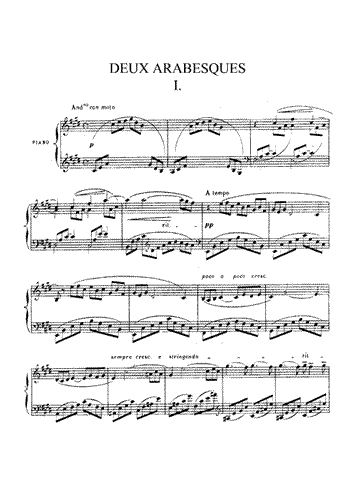Melanie's Coercion by the Birds
Debussy, Arabesque, and Lydia

Prior to the scene in Annie's house, Hitchcock introduces the music of another great master, Claude Debussy. When Melanie visits the Brenner's, she sits down and plays the piano after dinner. Her rendition of the fist Arabesque from Debussy's Deux arabesques can be heard throughout the scene. The gender coding in this scene differs greatly from that of the scene at Annie's house. In the same study, in which Wagner was named the most masculine composer, Debussy was named the least masculine and the third most effeminate. [15] Besides the typical association of Debussy as a composer of feminine music, the genre of composition used in the Deux arabesques is of particular importance. Arabesques are a compositional genre not meant to convey great emotional effect, like the text of a Wagnerian opera would, but rather they are meant to serve a purely decorative function. [16]
 [11]
[11]
Hitchcock's inclusion of the arabesque serves as a commentary on his view of the role of women. To Hitchcock, women should be decorative and beautiful but ultimately hollow in intellectual value. The piece by Debussy isolates only what Wagner would call the feminine part of the music. The association of the arabesque with the kitchen tells a great deal as well. The stability of the arabesque promotes a sense of calm. By creating this sense of lull in the kitchen, Hitchcock implies that the gender roles exhibited by Lydia are suitable. Had Hitchcock disapproved of Lydia's being in the kitchen washing dishes he would have chosen diegetic music that created a greater sense of conflict and instability.